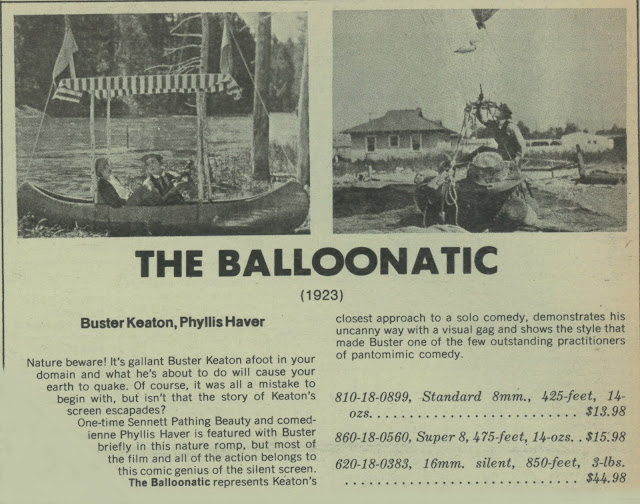Buster Keaton Gets a Blu-Ray Glow On --- Part One








It's all the more a marvel then to step back and regard how much better Keaton and other silent subjects look the further out we are from when they were made (shouldn't it be the other way around?). Remarkable too is stuff thought lost continuing to turn up, including elements to upgrade Buster's comedies from what Kino earlier released on DVD. Has the Internet and enhanced communication been key to so much unearthing? Again, it's new-found clarity that bring third dimensions of Keaton into (razor) focus. I looked at The High Sign and paid more attention to background clam chowder signs (a dime for a dish!) and 20's extra folk than Keaton himself ... most a blur before. Suddenly real-life pulsates around foreground Buster, levels to enrich many a repeat sit. These nineteen shorts are as many time machines ... being funny (when they are) is just gravy. Are laughs still there? The old Keaton conundrum applies as ever ... he's more breath-stopping than humorous to a not inconsiderable group (BK himself acknowledged the same issue when testing his comedies new). Some will always look on Buster more as magician than clown, or as a stunt performer daily putting life/limb in jeopardy. Moments find me still regarding him as more supernatural than real (as in, did a human being just do that?). Once I casually pointed out He nearly got drowned here during an Our Hospitality run and that cooled friends' response to what was left --- they focused on risk rather than laughing reward. Sometimes (if not always) it really is better to keep your mouth shut when sharing movie passion with others.

The Boat is among supernatural Busters. You'll remember it as one (of several) where Keaton engages a prop that could as easily deep-six or crush him. Later it would be bigger boats, then trains, but here for twenty-three minutes was hardship comedy I yearned to get past before Buster (and two little kids) swallowed half an ocean on verge of towing them under. Did Keaton measure comedy's value in terms of calamity he endured? If his was a goal of being the iron man of mirth, surely there was none to compete (Larry Semon took punishment to maybe greater, but less artful, extremes). Here's further query to experts ... Did comics before Buster harness such large and formidable props as he did with The Boat? (you could argue that Harold Lloyd used whole buildings for his) Keaton's short, like some of Lloyd's, amounted to comedy meeting physical peril with laughs earned at safety's risk. Did audiences then-respect comics more who were willing, like circus daredevils or stunt flyers, to put lives on the line for customer's entertainment?

So if Buster Keaton has passed Chaplin and Lloyd, that would, I suppose, make him the most popular and recognized of all performers who appeared in silent films. What long-awaited comeuppance for Talmadge sisters and like-minds who treated BK like pennies waiting on change. Too bad they can't come back just long enough to take receipt of that memo, critics too like ones who left Keaton's features in the shade. Are Keaton Blu-Rays outselling Chaplin's so-far released Modern Times and The Great Dictator? Snoops like me want to know, for no reason beyond confirming that Buster's once and for all scored the knockout punch to rivals. Heck of it is that Keaton was never competitive with others who clowned, so he never referred to them as rivals, which calls to mind an anecdote wherein a Chaplin daughter brought home a date who, in a stunner instance of lapsed tact, told Charlie that Buster Keaton was the better comedian, an assertion from which CC recoiled to a fortnight's despair.














































